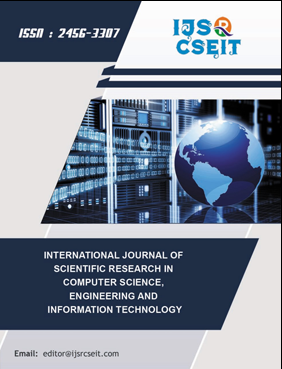Machine Learning Techniques for Predicting Conductive Properties of New Materials
DOI:
https://doi.org/10.32628/CSEIT2410340Keywords:
Machine Learning, Conductive Properties, New Materials, Predictive Modeling, Supervised Learning, Feature SelectionAbstract
The study "Machine Learning Techniques for Predicting Conductive Properties of New Materials" explores the application of advanced machine learning (ML) algorithms to predict the conductive properties of novel materials, accelerating the discovery and development process in materials science. Traditional methods for assessing conductive properties are often time-consuming and expensive, necessitating a more efficient approach. This research leverages various ML techniques, including supervised learning algorithms such as support vector machines, decision trees, and neural networks, to analyze large datasets of material properties and predict conductivity with high accuracy. Feature selection and engineering processes are employed to identify the most significant attributes influencing conductivity. The study also compares the performance of different ML models, optimizing hyperparameters to enhance prediction reliability. Results demonstrate that ML models can significantly reduce the experimental burden, offering rapid and precise predictions that align closely with empirical data. The integration of ML in materials science presents a transformative approach, enabling faster identification of promising conductive materials, thereby fostering advancements in electronics, energy storage, and other technological domains. The study highlights the potential of ML to revolutionize material property prediction, paving the way for accelerated innovation and application in various industries.
📊 Article Downloads
References
Curtarolo, S., Hart, G. L. W., Setyawan, W., & Mingo, N. (2013). High-throughput computational materials science. Nature Materials, 12(3), 191-201. DOI: https://doi.org/10.1038/nmat3568
Datta, R., Ramprasad, R., & Venkatram, S. (2022). Conductivity prediction model for ionic liquids using machine learning. The Journal of Chemical Physics, 156(21). DOI: https://doi.org/10.1063/5.0089568
Vivanco-Benavides, L. E., Martínez-González, C. L., Mercado-Zúñiga, C., & Torres-Torres, C. (2022). Machine learning and materials informatics approaches in the analysis of physical properties of carbon nanotubes: A review. Computational Materials Science, 201, 110939. DOI: https://doi.org/10.1016/j.commatsci.2021.110939
Liu, Y., Zhao, T., Ju, W., & Shi, S. (2017). Materials discovery and design using machine learning. Journal of Materiomics, 3(3), 159-177. DOI: https://doi.org/10.1016/j.jmat.2017.08.002
Ramprasad, R., Batra, R., Pilania, G., Mannodi-Kanakkithodi, A., & Kim, C. (2017). Machine learning in materials informatics: recent applications and prospects. npj Computational Materials, 3(1), 54. DOI: https://doi.org/10.1038/s41524-017-0056-5
Wu, S., Kondo, Y., Kakimoto, M. A., Yang, B., Yamada, H., Kuwajima, I., ... & Yoshida, R. (2019). Machine-learning-assisted discovery of polymers with high thermal conductivity using a molecular design algorithm. Npj Computational Materials, 5(1), 66. DOI: https://doi.org/10.1038/s41524-019-0203-2
Kireeva, N., Tsivadze, A. Y., & Pervov, V. S. (2023). Predicting ionic conductivity in thin films of garnet electrolytes using machine learning. Batteries, 9(9), 430. DOI: https://doi.org/10.3390/batteries9090430
Hashemi, M. S., Safdari, M., & Sheidaei, A. (2021). A supervised machine learning approach for accelerating the design of particulate composites: Application to thermal conductivity. Computational Materials Science, 197, 110664. DOI: https://doi.org/10.1016/j.commatsci.2021.110664
Mortazavi, B., Podryabinkin, E. V., Roche, S., Rabczuk, T., Zhuang, X., & Shapeev, A. V. (2020). Machine-learning interatomic potentials enable first-principles multiscale modeling of lattice thermal conductivity in graphene/borophene heterostructures. Materials Horizons, 7(9), 2359-2367. DOI: https://doi.org/10.1039/D0MH00787K
Nakhaei-Kohani, R., Madani, S. A., Mousavi, S. P., Atashrouz, S., Abedi, A., Hemmati-Sarapardeh, A., & Mohaddespour, A. (2022). Machine learning assisted structure-based models for predicting electrical conductivity of ionic liquids. Journal of Molecular Liquids, 362, 119509. DOI: https://doi.org/10.1016/j.molliq.2022.119509
Jain, A., Ong, S. P., Hautier, G., Chen, W., Richards, W. D., Dacek, S., ... & Ceder, G. (2013). The Materials Project: A materials genome approach to accelerating materials innovation. APL Materials, 1(1), 011002. DOI: https://doi.org/10.1063/1.4812323
Ong, S. P., Richards, W. D., Jain, A., Hautier, G., Kocher, M., Cholia, S., ... & Persson, K. A. (2015). Python Materials Genomics (pymatgen): A robust, open-source python library for materials analysis. Computational Materials Science, 68, 314-319. DOI: https://doi.org/10.1016/j.commatsci.2012.10.028
Raccuglia, P., Elbert, K. C., Adler, P. D. F., Falk, C., Wenny, M. B., Mollo, A., ... & Ceder, G. (2016). Machine-learning-assisted materials discovery using failed experiments. Nature, 533(7601), 73-76. DOI: https://doi.org/10.1038/nature17439
Butler, K. T., Davies, D. W., Cartwright, H., Isayev, O., & Walsh, A. (2018). Machine learning for molecular and materials science. Nature, 559(7715), 547-555. DOI: https://doi.org/10.1038/s41586-018-0337-2
Xie, T., & Grossman, J. C. (2018). Crystal graph convolutional neural networks for an accurate and interpretable prediction of material properties. Physical Review Letters, 120(14), 145301. DOI: https://doi.org/10.1103/PhysRevLett.120.145301
Ward, L., Agrawal, A., Choudhary, A., & Wolverton, C. (2016). A general-purpose machine learning framework for predicting properties of inorganic materials. npj Computational Materials, 2(1), 16028. DOI: https://doi.org/10.1038/npjcompumats.2016.28
Zunger, A. (2018). Inverse design in search of materials with target functionalities. Nature Reviews Chemistry, 2(4), 0121. DOI: https://doi.org/10.1038/s41570-018-0121
Gilmer, J., Schoenholz, S. S., Riley, P. F., Vinyals, O., & Dahl, G. E. (2017). Neural message passing for quantum chemistry. In Proceedings of the 34th International Conference on Machine Learning-Volume 70 (pp. 1263-1272).
Ward, L., Liu, R., Krishna, A., Hegde, V. I., Agrawal, A., Choudhary, A., & Wolverton, C. (2018). Including crystal structure attributes in machine learning models of formation energies via Voronoi tessellations. Physical Review B, 96(2), 024104. DOI: https://doi.org/10.1103/PhysRevB.96.024104
Downloads
Published
Issue
Section
License
Copyright (c) 2024 International Journal of Scientific Research in Computer Science, Engineering and Information Technology

This work is licensed under a Creative Commons Attribution 4.0 International License.




